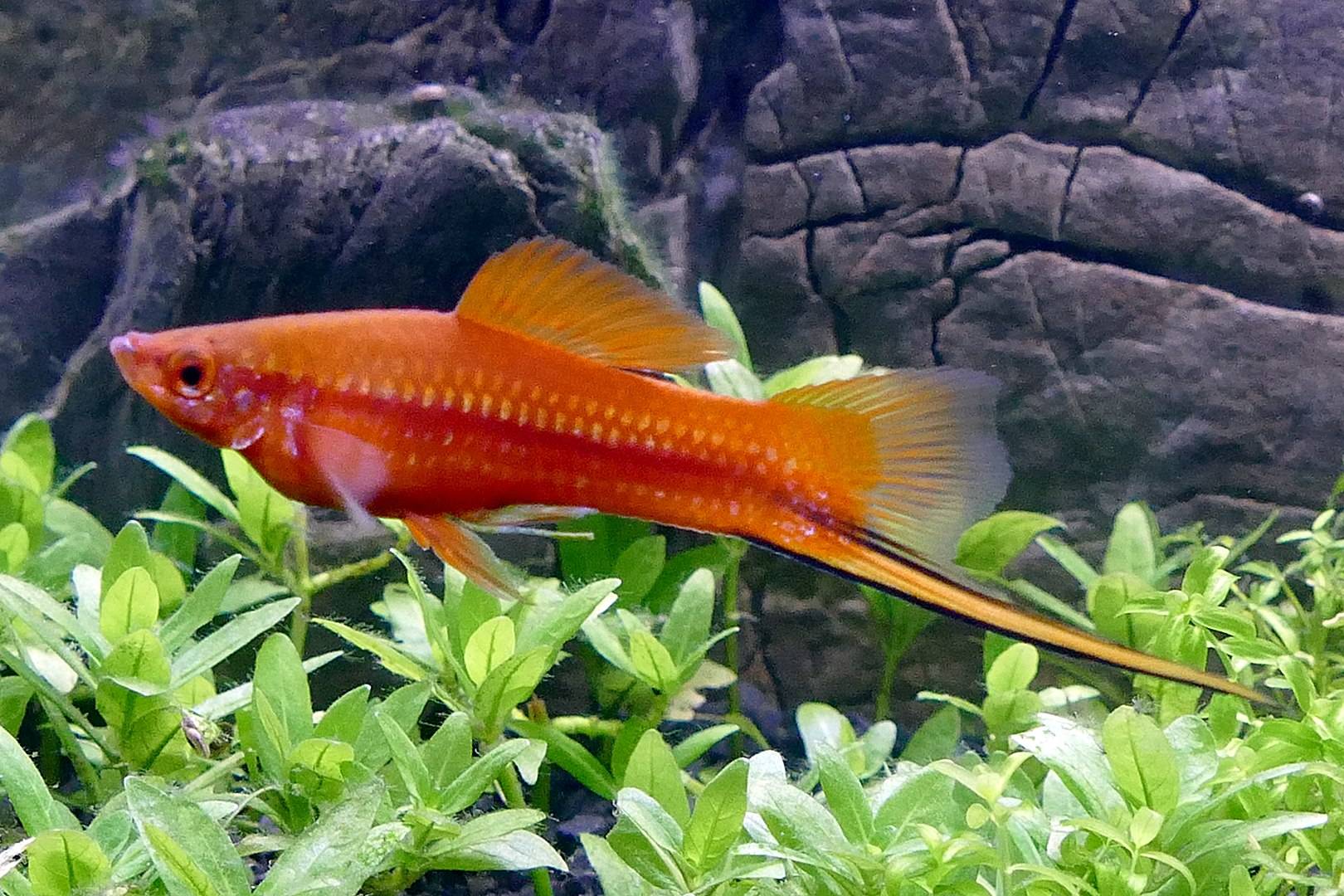Jayme Blaschke | January 14, 2021

New research conducted in part at the Xiphophorus Genetic Stock Center at Texas State University has identified the long-sought genetic basis behind eye-catching male ornamentation in swordtail fish.
The international research team includes Texas State's Manfred Schartl and Kang Du of the Xiphophorus Genetic Stock Center and the University of Würzburg, Würzburg, Germany. The study, "The Developmental and Genetic Architecture of the Sexually Selected Male Ornament of Swordtails," is published the journal Current Biology (https://doi.org/10.1016/j.cub.2020.11.028) with Schartl as the lead author.
In many species throughout the animal kingdom, males have eye-catching characteristics that are beneficial in finding a mate despite being otherwise impractical. As a rule, it is the males of species that displays such characteristics. Charles Darwin used the example of the swordtail fish (Xiphophorus hellerii) to explain his theory of sexual selection: If females prefer to mate with the carriers of striking ornamental traits, such traits might become established in the course of evolution even though they are likely to be harmful for their owners.
Schartl's team successfully identified the genetic bases of this evolutionary model in Xiphophorus. Among all eligible genes, the researchers identified some that are responsible for the development of the corresponding ornamental trait in this species of fish. Their findings also suggest that a gene important for neuronal processes in the brain has, through the course of evolution, taken on an additional new function related to the development of the ornamental tails.
"In several species of the genus Xiphophorus, the males carry a so-called 'sword,' a striking extension of the lower edge of the tail fin, which is yellow, orange or red in color and surrounded by a dark black margin," Schartl explained.
The sword develops during puberty and can equal the length of the fish's body in some species. A tail that size should be a disadvantage because the conspicuous body ornament attracts predators while simultaneously making escape more difficult as it reduces swimming performance. However, the females of Xiphophorus hellerii and several related species prefer to mate with males that carry a long sword – males with shorter swords literally lose out in this competition.
Researchers looked for all genes that are specifically active in the sword developing part of the tail fin, but not in fin regions that do not form a sword. Next, they identified genes that only expressed in males, eliminating those that expressed in females. After this process, 255 of the original 329 genes remained. Selective breeding of swordtail males with related species that lacked swords further reduced the number of candidate genes down to three. Of these three genes, one with the scientific name kcnh8 proved to be crucial for the development of the male characteristic.
"This gene codes for a potassium channel – a group of channels that play an important role in particular in the transmission and processing of stimuli in the nervous system," said Schartl.
The new findings point to a gene with a primary function in neural cells that was recruited during evolution for developing the male sword about 3 to 5 million years ago, early during the diversification of swordtail fishes. The new function was not due to structural changes within the gene and its product, but to changes in gene regulation. Experiments show that kcnh8 in the sword during normal development and after treatment with male hormones is highly upregulated in the region where the sword is organized. In all other fin areas of the males and in female caudal fins it is only weakly expressed. In addition, further studies show a direct correlation between the level of gene expression of kcnh8 and the length of swords.
Share this article
For more information, contact University Communications:Jayme Blaschke, 512-245-2555 Sandy Pantlik, 512-245-2922 |
